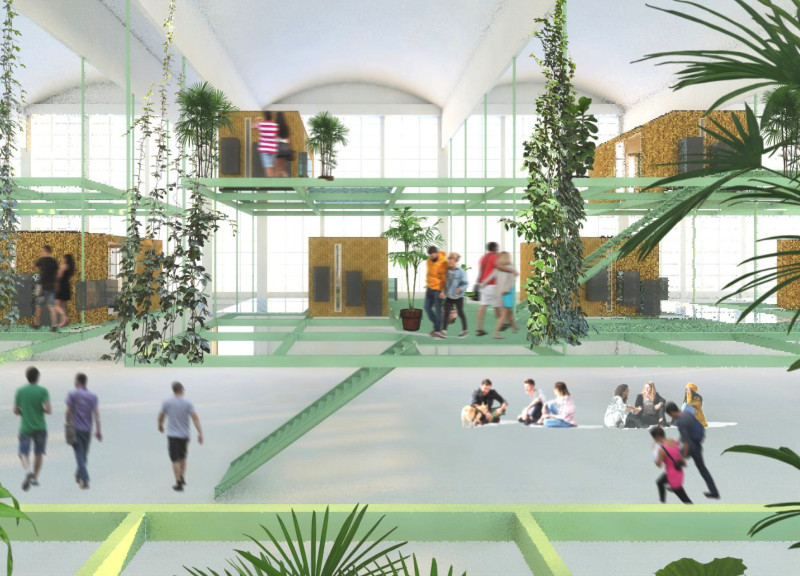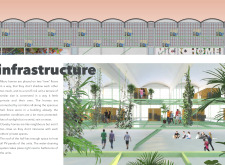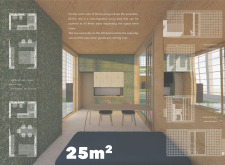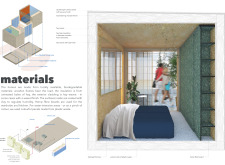5 key facts about this project
The function of Brownfield Hall encompasses both residential and commercial purposes, creating a multi-use environment that prioritizes interaction and sustainability. The design features micro-housing units, each approximately 25 square meters, that are adaptable and efficient. Each unit is equipped with rearrangeable living areas that promote versatility, allowing residents to modify their space according to personal preferences or communal activities. Shared amenities are strategically located on the north side of the micro-homes to facilitate social engagement while optimizing the use of available space.
Unique Design Approaches
Brownfield Hall incorporates several distinctive design approaches that set it apart from typical urban housing projects. Primarily, it utilizes locally sourced, sustainable materials, including wooden frames, hay weave for insulation, hemp fiber boards for cabinetry, and clay finishes to enhance humidity control. This choice of materials not only promotes environmental responsibility but also establishes a connection to local agricultural practices.
The project emphasizes the importance of communal spaces, with large open areas designed to serve as hubs for social interaction and local business activities. The architecture features flexible corridors that function as access points while encouraging a sense of community. Additionally, the inclusion of an innovative water-cleaning system and greywater collection showcases a commitment to sustainable living, supporting the integrated aquaponics system within the shared environment.
Sustainable Living and Community Engagement
The architectural design provides a thoughtful integration of sustainable practices, with energy-efficient solutions that complement the overall environmental goals. The aquaponics panels support vertical gardening, allowing residents to grow food within their living spaces. By creating an environment conducive to interaction, the design aims to combat isolation and foster community ties among residents.
The spaces within Brownfield Hall are conceived to maximize resident engagement, featuring areas allocated for social activities and local commerce. This integration of living and working spaces not only meets housing needs but also promotes economic viability and community resilience.
For further insights into the architectural plans, sections, and designs of the Brownfield Hall project, we invite readers to explore the comprehensive project presentation. Detailed examination of these elements will provide a greater understanding of the architectural ideas that drive this significant urban development initiative.

























